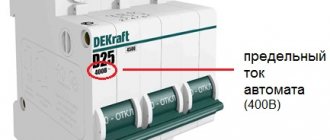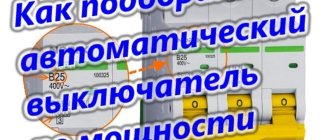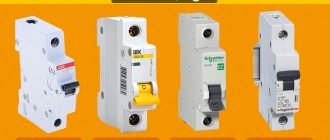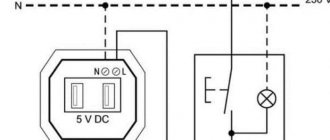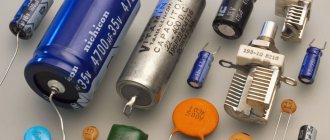Design and types of SF6 switches
These systems are designed for operational monitoring of the condition of high-voltage power lines. They are very similar to oil ones, but have a different working environment - the principle of operation is based on the properties of gas compounds instead of oil. The medium used is SF6 (sulfur hexafluoride).
The advantage of SF6 gas is its unpretentiousness. If oil models require special care, periodic oil changes and cleaning, then SF6 models do not face such a problem. In addition, the gas is durable: it does not degrade over time and does almost no harm to the mechanical elements of the switch.
Physically, SF6 is a non-flammable, colorless and odorless gas. It is much denser than air, and its molecular weight is 5 times that of air. The gas is resistant to external influences and retains its characteristics: even if an arc occurs in it and decay begins, after some time the state of the mixture will be restored.
There are two types of SF6 circuit breakers (hereinafter referred to as EB):
- tank;
- core EV.
Column electric switches are used in 220 V networks; these are standard single-phase switches. They consist of two interconnected parts:
- arc extinguishing;
- contact part.
Both have the same dimensions and volume.
Tank EVs are smaller. They include one of the types of drives discussed below. The drive is distributed over several phases, due to which the device gently changes the voltage level. Another advantage of tanks is their large load capacity, which is achieved by the presence of a built-in transformer.
The drive here is also a regulator: it provides switching on/off of the flow of electricity and maintaining the electric arc. The following types of EV drives are distinguished:
- spring-hydraulic (PPRG);
- simpler spring ones (PPRM).
Typically the actuator is mounted on a low pedestal or near the ground so that it can be easily reached and adjusted by maintenance personnel. The part consists of:
- turning mechanism;
- release devices;
- locking latch.
Spring ones are reliable and have a very simple design; they use only simple mechanics. During commissioning, a certain compression of the spring is established, and after moving the control lever, it straightens with further opening of the contacts. This type of EV often serves as a stand for presentations of the behavior of sulfur hexafluoride under the influence of an electric field.
Spring-hydraulic SF6 equipment is hydraulically controlled. It is more expensive, but more effective, since it can independently change the position of the latch.
In addition to the design, there are different types of EVs based on the principle of interrupting the electric arc:
- rotating;
- air (autocompression) EVs;
- longitudinal blast;
- similar to the previous point, with gas heating.
All internal components of the EV are placed in a container filled with SF6 gas. Operation control is carried out remotely, using electronics, or mechanically manually. Layout of all components of a typical EV:
Such features lead to rather large dimensions of the devices. Note that purely manual control is relevant for low-power samples; in other cases they resort to:
- mechanical control;
- cargo management;
- spring;
- electromagnetic method;
- pneumatic
But almost everywhere there is an emergency manual lever.
The electromagnetic drive requires external power, so such an EV is connected to a current source of 220 V and 58 A. The system is very reliable and can be successfully operated in adverse conditions. In a pneumatic one, the working unit is a cylinder with a piston. The action of compressed air ensures high response speed.
Features of the VEB-110 switch
SF6 gas circuit breaker VEB-110 produced by EMZ
- Integration of circuit breaker and current transformer. Highly compact and cost-effective equipment.
- Small volume, light weight, moderate height, providing the ability to transport the circuit breaker in assembled form, leading technological level in the country.
- The circuit breaker is equipped with a self-extinguishing arc chamber based on the principle of “gas supply under pressure and ash expansion”, has high opening energy, short arc extinguishing time, complete shutdown time of 3 hertz, long service life, the number of shutdowns at full power reaches 20 times, simple design.
- The switch is equipped with a well-developed spring mechanism ST26, which has a simple and compact design, high reliability, requiring little effort for maintenance, mechanical service life reaches 1000 cycles, meets the requirements of “no lubrication”
- The outer body is made of aluminum alloy, the mechanism body is made of stainless steel, all protruding parts, driving parts are made of stainless steel and hot-dip galvanized, which meets the practical requirements of the user.
- Light weight of the equipment, low load on the foundation, high anti-corrosion properties, low losses during vortex, low heating of the housing, resistance to through current.
- When installed on site, only the grouting of the anchor bolts is required, making installation simple, ensuring long periods between servicing, and guaranteeing ease of operation and maintenance.
- Resistance to environmental influences, the ability to operate in harsh conditions (heavy pollution, areas with heavy fog, hail), in seismic areas, busy urban areas with a shortage of space, mountain hydroelectric power stations with difficult excavation conditions.
Principle of operation
SF6 circuit breakers perform their function by isolating the phases with a gas layer. Having received a signal to turn off the electrical equipment, the contacts open and an arc is formed in the gas environment. Electricity decomposes SF6, but the arc is weakened due to the high level of pressure. If the switch is adjusted to low pressure, the injection compressors come into action. Current equalizing shunts are also used.
EV functioning diagram:
As already indicated, the secret lies in the working medium - SF6 gas. Its molecules easily bind the electrons contained in SF6 and produce negative ions. This property is sometimes called "electric strength". In air, for example, it is almost three times weaker. In addition, SF6 is capable of cooling effectively.
Thanks to this, systems based on it have become widespread in electrical engineering, for example:
- in power transformer equipment;
- distribution devices;
- high voltage switches;
- on high-voltage power lines connecting remote systems.
In tank samples, control is performed by transformers and drives included in the circuit.
On the image:
- 1 - modules made of porcelain or polymers.
- 2 - transformers.
- 3 - tank with extinguishing device.
- 4 - gas-filled chamber.
- 5 - drive located below (in this case hydraulic).
- 6 - metal frame.
- 7 - valve for adding SF6 gas.
Example
Let's consider the triggering mechanism: as an example, we use a SF6 gas switch LW36 made in China. When a shutdown occurs:
- the built-in spring begins to act on the moving elements;
- the latter are lowered;
- contacts open, with the exception of arc extinguishing contacts;
- after opening the arc extinguishers, an arc is created;
- the heated gas passes into the thermal chamber;
- then the check valve operates;
- SF6 gas leaves the chamber into the gap, the electric arc is extinguished.
When extinguishing a relatively weak current, the initial pressure of the working chamber is small, so additional pressure is drawn from the compression tank.
Design
The switch pole is a metal body on which two porcelain insulators are mounted, forming the high-voltage switch inputs. The arcing device is located in the pole body and one of the porcelain bushings. A block of current transformers is located inside the second pole input. A membrane-type protective device is placed on the upper flange of this input to ensure explosion safety of the pole in an emergency.
To ensure the functionality of the UHL circuit breaker at low temperatures (down to minus 60ºС), heating of each pole is provided.
To make it easier to dismantle the poles, the electrical circuits of the current transformers and heating devices of the circuit breaker are equipped with plug connectors installed in the lower part of the protective covers.
The system for filling the poles of the circuit breaker with SF6 gas consists of:
- Autonomous sealing valves (ASVs) of poles;
- three density sensors (one for each pole), which are an electrical contact pressure gauge equipped with a temperature compensation device that brings the pressure gauge readings to a temperature of 200C, and has three pairs of contacts, one of which is designed to signal a dangerous level of reduction in the density of SF6 gas due to its leakage (and the need for replenishment), and the other two - for automatic shutdown of the device with blocking of the switching circuit or for blocking control of the switch in general (which is determined by the substation design);
- connecting nipples with nuts and seals for connecting density sensors to the poles.
The switch is filled with SF6 gas that meets the requirements of TU 6-02-1249-83.
Advantages and disadvantages of SF6 circuit breakers
The devices have undoubted advantages:
- versatility. They can be installed in networks with almost any voltage;
- unpretentiousness - EVs work even in fire hazardous areas and seismic zones;
- response speed. SF6 reacts to the occurrence of an arc in a fraction of a second, resulting in almost instantaneous de-energization of the protected devices;
- durability. Gas does not wear out the elements in contact with it, the gas mixture does not degrade and does not need regular replacement, and the outer shell of the EV is durable and protects well from adverse influences;
- work with both alternating and direct high voltage. This distinguishes them favorably from those that are not capable of functioning in high-voltage vacuum networks;
- explosion and fire safety;
- closed working environment - when triggered, there is no exhaust to the outside.
But there are also design-related disadvantages:
- high price. The SF6 switch is simple in design, but difficult to manufacture; the synthesis of the gas mixture is also quite labor-intensive and expensive;
- cannot be placed in any place. Switches are mounted only on a special electrical panel or a specially prepared foundation;
- demanding temperature conditions - at low temperatures EVs are ineffective (but SF6 gas can be heated);
- maintenance requires specific skills and equipment;
- An electromagnetic drive system requires a high-capacity battery.
The main disadvantage of the mixture is its transition to the liquid phase, which is observed under certain conditions. This occurs at certain temperature and pressure ratios. For example, in cold conditions (minus 40 degrees Celsius) a pressure of no higher than 0.4 MPa is required with a gas density lower than 0.03 kilograms per cubic centimeter - which does not provide proper performance. Therefore, in practice, in order to avoid transition to a liquid state, SF6 gas is heated.
Purpose
The SF6 circuit breaker VTB-110III (hereinafter referred to as “switch”) is designed to perform switching operations (closing and opening), as well as automatic reclosure cycles under specified conditions in normal and emergency modes in three-phase alternating current networks with a grounded neutral (ground fault coefficient not higher than 1.4) at a rated voltage of 110 kV and a rated frequency of 50 Hz.
The switch is not intended for switching a shunt reactor and a capacitor bank.
Maintenance rules for SF6 circuit breakers
Maintenance of SF6 circuit breakers is regulated by the Electrical Installation Rules (PUE) 1.8.21.
When connecting the system, you should check that there is a minimum pressure in the tank - without this, the device will break. To avoid warnings, the design provides an alarm warning of a critical pressure value. There is also a pressure gauge for visual inspection.
The drive cabinet contains heating elements that prevent condensation from forming on critical mechanisms. The EV operator is obliged to monitor the constant operation of the heaters and prevent them from turning off.
When inspecting an EV you should:
- check the condition of external protection;
- remove contamination if present;
- repair damage;
- find out and eliminate the cause of contact heating, if any;
- if extraneous noises and crackling are detected, identify their source;
- check the integrity of the metal support frame, since it is also part of the ground loop;
- take pressure gauge readings and compare them with the passport data specified by the manufacturer;
- check whether the control and monitoring devices are in working order, repair or replace the faulty ones
When gas pressure drops, its reserves in the chamber are replenished.
